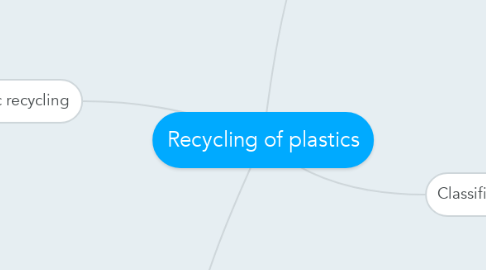Recycling of plastics
by Gladys Pinilla

1. What is plastic
1.1. Plastic has been one of the most important developments of the 20th century. It has replaced other materials because they are economical, lightweight, durable, versatile and resistant to moisture, chemical and non-putrescible
2. Fabrication process
2.1. the manufacture of plastics is necessary for the petrochemical industry to supply the monomers and together with the addition of various types of additives, it is possible to modify its properties.
3. Classification
3.1. Thermoplastic resins: these types of resins when heated flow like viscous liquids and when they cool they solidify. Cooling and heating can be done as often as desired without losing the properties of the material. This type of plastics compose approximately 85% of the plastics consumed. They are polyethylenes (high density polyethylene - HDPE, low density - LDPE, terephthalate - PET), polypropylene (PP), polystyrene (PS) and polyvinyl chloride (PVC).
3.2. Thermosetting resins: these types of plastics melt when heat is applied and solidify by applying even more heat. These can not be reheated and remodeled but can be reprocessed by melting, making recycling simple. In this type of plastics we find polyurethane (PU), epoxy resins, phenols and unsaturated polyester
4. Stages of plastic recycling
4.1. Crushing to obtain flakes
4.2. Removal of contaminants (eg paper labels) by cyclones
4.3. Washed
4.4. Drying
4.5. Extrusion to form pellets (pellets will be the raw material to make new objects in plastic)
4.6. The chemical recycling is more complex, being necessary to decompose the plastic polymer in order to recover its monomeric form and then carry out its re - polymerization. In these cases the recycled material is indistinguishable from the virgin material. This process is very common for recycling of products made in PET.


